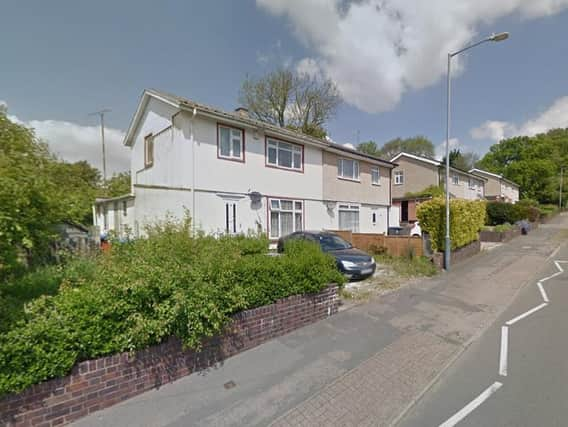The story behind Rugby's 'Tin Town' and the proud, hard-working people who battled to bring it about


We often hear talk of the ‘good old days’ and it’s perfectly true that there are many aspects about years gone by that occasionally make us yearn for what we perceive as being less complicated and perhaps kinder times.
Sadly, the truth can be somewhat different. Recently, I have been in contact with Rugby historical researcher Christine Howling, and have been profoundly shocked by a story she has uncovered about the town’s immediate post-war past.
Advertisement
Hide AdAdvertisement
Hide AdIn Rugby: Aspects of the Past (Volume 11) she relates the sorry tale of Rokeby Camp. She freely admits that, despite being Rugby born and bred, she had only heard of it after someone mentioned on Facebook that they had lived at the camp.
So what exactly was Rokeby Camp, and how did it come into being? Christine’s probing has revealed the following information, most of which comes from Rugby Advertiser archives.
In 1941, and with the Second World War raging, the Royal Artillery built the camp on some land that at one time belonged to the Rokeby House estate in Barby Lane.
The estate stretched from Barby Road to Dunchurch Road and incorporated Bilton Fields. The owners had previously been selling off the land piecemeal and Rugby Corporation bought some of the plots for development before 1939.
Advertisement
Hide AdAdvertisement
Hide AdBut when war broke out that year, all building for housing stopped and it was acquired by the military, who erected 15 Nissen huts on the site.
When peace finally came in 1945, it was debated by the local council as to whether these huts could be used to house homeless families, or as a hostel for building workers. There was at this time an acute housing shortage in Rugby.
However, events were soon to take a dramatic turn. On September 10, 1946, as corporation employees were posting anti-squatter notices on the site with police and an army colonel standing by, desperate families pushing prams and barrows laden with household goods arrived in the pouring rain to take possession of the huts.
The next weekend, more people arrived at the camp, making a total of 23 families. They quickly set to work making partitions out of racks for privacy and to make their new homes as comfortable as possible.
Advertisement
Hide AdAdvertisement
Hide AdIt seems that the authorities more or less went along with this, with further families staking ‘claims’, some of the menfolk being former soldiers who had fought in the war.
Nevertheless, we can only begin to imagine the hardship endured by these poor people. Winter was fast approaching, and there were at least five expectant mothers who were suffering the strain of camp life and the lack of proper amenities.
In November, Rugby Communist Party wrote to the borough council, asking its members to alleviate the suffering at Rokeby Camp. The letter asked why adults and children were facing a long winter with only candles for lighting and primitive cooking facilities.
Yet despite these privations, the women managed to cook Christmas dinner, and it was recorded that ‘scarcely one of the families went without turkey, goose or cockerel’. And those with battery-powered radios were able to hear seasonal wireless programmes.
Advertisement
Hide AdAdvertisement
Hide AdBut in February, 1947, the Rugby Advertiser reported that the families were still without electric light, with many people being unable to sleep properly as the cold was so intense that month.
And while Rugby’s councillors were mainly sympathetic to the squatters’ plight, this was not the case with the national government, which callously decreed that all help should be withheld, the premises securely locked, and police back-up called if necessary.
In August, 1947, the council decided to gradually close the camp, and by January, 1948, the housing committee had agreed to the erection of steel houses on the site to be called Overslade estate.
Initially, 51 houses were completed, and although a Councillor Gibson stated that he was ‘not a lover of steel houses and hated the sight of them’ the relocated families were very pleased with their new homes.
Advertisement
Hide AdAdvertisement
Hide AdIn November, 1949, the building of Rokeby School began on the site.
The estate would, of course, go on to be forever known as ‘Tin Town’. As a young reporter on the Rugby Advertiser during the 1960s, my travels often took me to this area.
And although it may be a long time ago now, my enduring impression of this part of Rugby was that the majority of the residents were solid, proud, old-style, respectable working class.
They were from sturdy, resilient stock that had found that Britain was not exactly a home for heroes after the war, yet they nevertheless got stuck in and made the most of what we, in more comfortable times, would regard as appalling conditions.
Advertisement
Hide AdAdvertisement
Hide AdI take my hat off to them - and also salute Christine Howling for an excellent piece of research and writing that should be regarded as an important – and hitherto neglected - part of Rugby’s history.
John Phillpott’s third book Go and Make the Tea, Boy! is available from booksellers and also online.